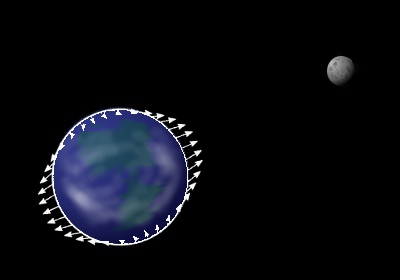The tidal bulge on the far side of the earth is not caused by centrifugal force. It is caused by the exact same thing the near-side bulge is caused by: the moon's gravity. Furthermore, tidal effects are not caused by the overall strength of gravity like planetary orbits are. Rather, tidal effects are instead caused by gravitational gradients, which are differences in gravity from one point on earth to the next.
These differences in the gravitational field arise from the fact that the moon's gravity spreads out into space radially in all directions and weakens with distance. In fat, both the sun's and the moon's gravity add together to create the tidal bulges.
The bulge on the near side is not caused by the water being attracted to the moon by its overall gravitational force. Instead, both tidal bulges are the response of ocean water to the gravitational gradient of the sun and the earth, as explained in the textbook "Planetary Sciences" by Imke de Pater and Jack J. Lissauer.
In the gravitational-gradient effect, not all points on the earth are attracted to the moon. If we ignore the sun for a moment, the ocean water is attracted towards the axis of the earth that points to the moon, and then out along the axis as shown in the picture.
As a result, the ocean squashes into a football shape. The ocean's tidal bulges are like taking a spherical balloon and squeezing on the sides until the top and bottom bulge out. Even if the earth stopped spinning, there would still be two tidal bulges. The spinning of earth does lead to centrifugal-force-caused bulging, known as equatorial bulging, but it is a different effect from tidal bulging.




0 Comments
Please Share Your Valuable Opinion